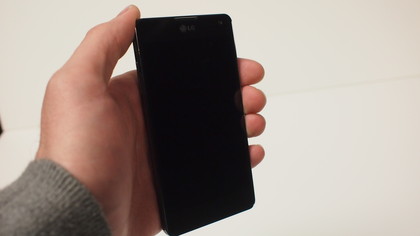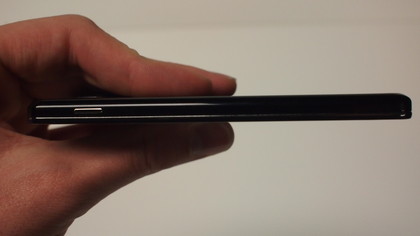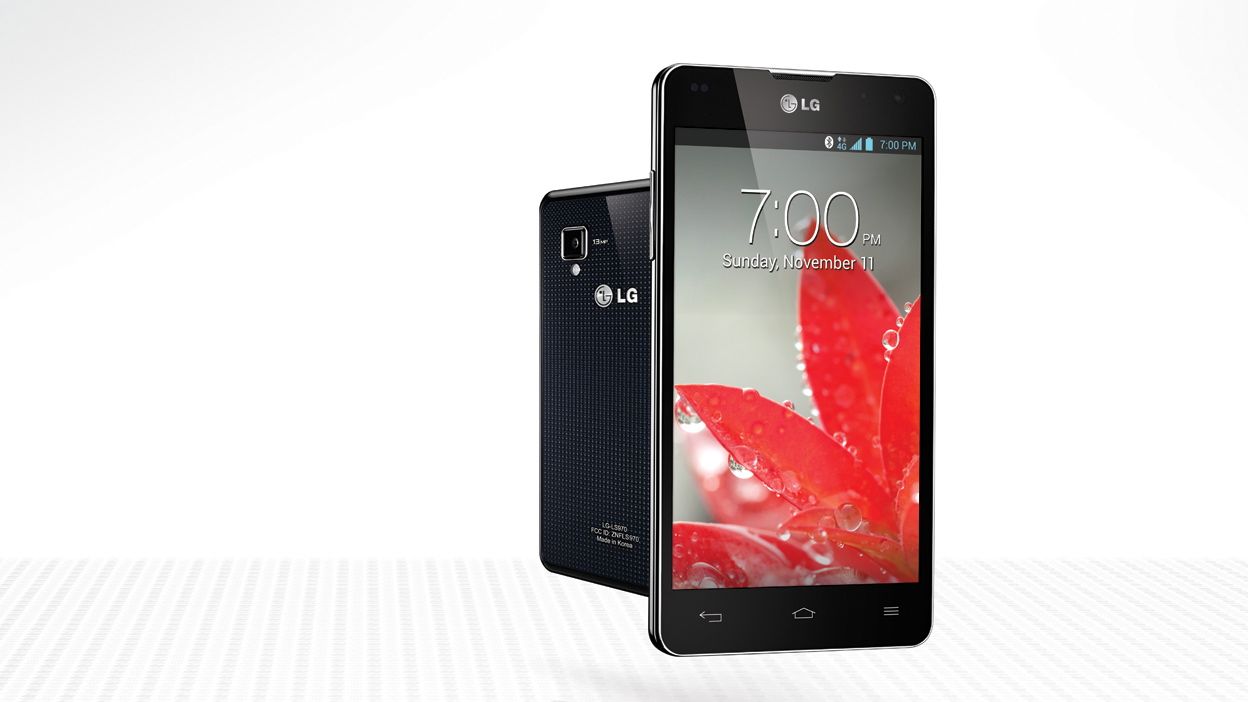TechRadar Verdict
Pros
- +
Fantastic 4.7-inch display
- +
Beefy hardware makes for a fast phone
- +
Jelly Bean in December Less bloatware than AT&T model
- +
Highly customizable widgets and home screens
Cons
- -
Camera underperforms
- -
Sprint's 4G coverage is small
- -
Average microphone quality
- -
No microSD support
Why you can trust TechRadar
The good ship LG has long navigated the world of electronics, making everything from televisions to air conditioners. Its strategy on the smartphone battlefield mainly had it providing reasonably priced handsets or more niche devices.
On November 2 the LG Optimus G will arrive on American shores. A 4G capable phone, it has a 1.5GHz quad-core processor, Android 4.0: Ice Cream Sandwich, 32GB of storage, a high-resolution display and enough memory to choke a mid-range handset (a whopping 2GB, to be exact). Additionally, a prompt upgrade to Android 4.1: Jelly Bean awaits it in December.

While the essential specs will remain the same, the two U.S. carriers for the LG Optimus G are getting slightly different models. AT&T's version has removable SIM and microSD support, and a slew of carrier apps, while Sprint's has a completely sealed design (no swapping SIMs or storage here) and a grandiose 13-megapixel camera. A tweaked bezel gives the two phones a marginally different appearance.
This review will focus on the Optimus G for Sprint. We've tested both phones, for information on the other version, read our LG Optimus G (AT&T) review.
Past LG phones have undercut the competition on price, devices like the 4G-ready LG Spectrum, the stylish LG Prada world phone, or the the LG Intuition, one of the lamentably named "phablets." However, it was always the Optimus line that had the power. The Optimus 4X HD was the company's first quad-core phone, but it lacked 4G network speed.
With the Optimus G, LG has truly entered the 4G competition. Beefy hardware and a large, sharp display make it a real showpiece, but as a carrier Sprint's stable is growing crowded with impressive devices. At $200 with two-year contract, the Optimus G is racing alongside some of the best phones out there, the iPhone 5, Samsung Galaxy S3 and HTC Evo 4G LTE.
On paper, Sprint and LG seem like perfect allies. Both companies are looking to grow in the U.S. smartphone market, but have the two come up with a compelling deal for consumers? Is it even the right time to buy a 4G phone with Sprint, whose 4G network is still "coming soon" in most US cities, including our own San Francisco Bay area?
Sign up for breaking news, reviews, opinion, top tech deals, and more.
And is the Optimus G really the best LG has to offer? How long will we be waiting for the Nexus 4 by LG? The device is rumored to be a collaboration between LG and Google that may bring about the next version of the Android OS, Key Lime Pie. Should buyers just be waiting for that? These are the questions to be asked as we review the LG Optimus G for Sprint.
Design
The LG Optimus G for Sprint (model number LG-LS970) is big and rectangular, to the point where it feels like a tablet that was shrunk down to fit in your pocket. Other than the fact that it doesn't come in white, it bears a heavy resemblance to the LG Optimus 4X HD. It's a slab of black plastic with rounded edges and a spacious 4.7-inch screen, measuring 5.19" x 2.71" x 0.33" (131.9 x 68.9 x 8.5 mm) in total.

The overall body of the LG Optimus G may be Gorilla Glass but it sure feels like plastic. Smooth, durable, seamless plastic, but plastic nonetheless. Running a finger across the screen to the the edge of the bezel, you can hardly feel any gap between the two. It has a slick feel in the hand that helps to offset the inherent awkwardness of a such a large handset. The Sprint version has a thinner bezel, with a line of metal running around the side, making it a look a bit like an overgrown iPhone 4.
The phone is big, but surprisingly skinny. Being only 0.33 inches thick adds to the overall slickness of the handset. The relatively thin body is owed to a completely sealed design. While neither carrier's Optimus G has a removeable battery, the AT&T version has a removable SIM card and microSD slot. The Sprint version does not, so the onboard 32GB of storage is all you're getting. This is one of only a few major discrepancies between the two versions, in addition to the different bezel and higher megapixel camera on the Sprint handset.

The sides of the Optimus G are rounded, but the backside is flat, unlike the Samsung Galaxy S3 or HTC One X, which have slightly bubbled rears. This makes the G feel even more like a slab of technology. The lense for the 13-megapixel camera is pronounced, preventing it from having completely flat clearance, like the AT&T model.
Holding the phone, it feels slick but not slippery. Thankfully, the polycarbonate body is just grippy enough that it won't fly out of your palm. While we generally prefer phones with aluminum bodies, like the Droid Razr M or the iPhone 5, the Optimus G is not unappealing to the touch. It's a nice combination of smooth but easy to hold on to.
The LG Optimus G's power button is located on the upper right side, with the volume rocker set slightly lower on the left side. On the AT&T version of the phone, the power button glows, serving as a notification light. The Sprint handset lacks this feature, and simply shows alerts on the lock screen.

Physically, the two carrier versions of the LG Optimus G are just different enough to be worth noting. As we mentioned, the LG Optimus G for Sprint measures 5.19" x 2.71" x 0.33" (131.9 x 68.9 x 8.5 mm). The AT&T version (model number LG-E970) is 5.15" x 2.82" x 0.33" (130.8 x 71.6 x 8.4 mm). The essential specs like processor and memory are the same, though. The primary differences are the lack of removable storage and SIM on Sprint and discrepancies between the cameras. We'll address differences between data service and carrier apps later in this review.
